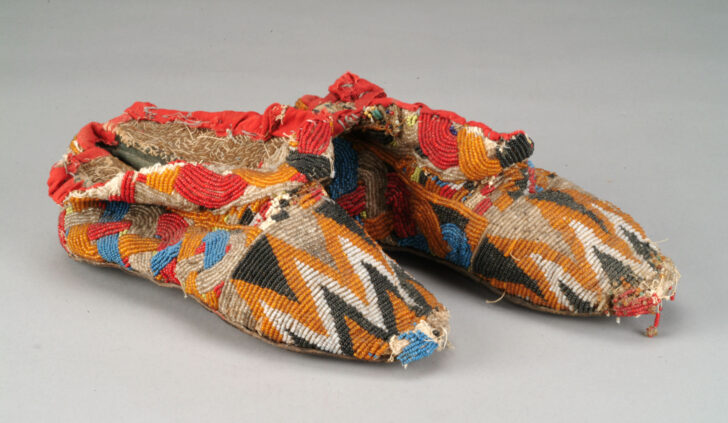Oba’s Slipper (One of a pair)
Yoruba

Description
Subject Matter:
These beaded slippers, called bata ileke in the Yoruba language, would have formed part of the regalia of an oba, a sacred king that could trace his ancestry to Oduduwa, the founder and first oba of Yoruba peoples. Although stone beads were locally produced prior to the 15th century, and during the 16th century European glass beads arrived through trade routes, glass seed beads were not used by Yoruba craftsmen until the 19th century. Normally worn only by royalty or religious leaders, the beaded regalia of an oba did not include shoes until the mid-18th century, as prior to the changing social and political scene of that time the oba would not have left the palace, except for the most important events. As the oba had sacred power, his feet could not touch the ground, which allowed for the creation and use of slippers such as these. The interlace pattern on these slippers is called salubata, often associated with royalty.
References:
Drewal, H. Yoruba: Nine Centuries of African Art and Thought, 1989
Lawal, B. Visions of Africa: Yoruba, 2012
Pemberton, J. African Beaded Art: Power and Adornment, 2008
Physical Description:
Shoe with a leather sole attached to a cloth lining with metal tacks. The outside of the shoe is covered in multicolored beadwork; the toe has a pattern of zig-zags in orange, black, and white while the sides and upper flaps have an interlacing pattern in cream, red, blue, and orange. The top of the shoe is bound with red cloth along the edge.
Usage Rights:
If you are interested in using an image for a publication, please visit https://umma.umich.edu/request-image/ for more information and to fill out the online Image Rights and Reproductions Request Form.